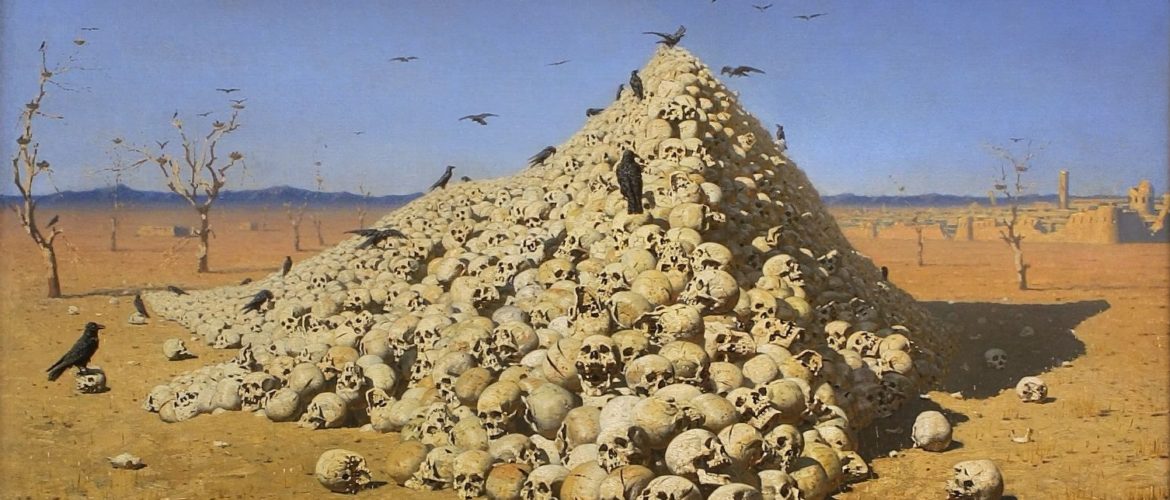Powerful and Shocking Anti-War Art Through the Centuries

One of the ways that contemporary societies cope with grief and desperation is by creating. Art helps process fears and highlight the terrifying truth of the war. These four works of anti-war art all deal with this painful subject in different ways, but each of them makes a clear statement and leaves no place for tolerance toward injustice and violence.
Powerful and Shocking Anti-War Art Through the Centuries
“NO WAR” by Tatsuya Tanaka
Created in the aftermath of the Russian invasion of Ukraine, this piece depicts the devastation of the war. A building made from stacks of paper is pierced by a pencil representing a missile. Toy furniture and cars are visible under the shreds of paper. Small figurines of a family, hugging possibly for the last time, are standing next to paper pieces saying “NO WAR.” Tanaka uses the miniature medium to show the colossal and irreversible effect of war on people.
“Arch” by Ai Wei Wei
In 2022, Ai Wei Wei presented his new piece titled “Arch.” The name of the massive steel installation is self-explanatory — it is an arch made from thick wires, with a silhouette of two people cut out in the middle of it. This work of anti-war art comments not only on the ongoing war in Ukraine, which was one of the motivations for the creation of the arch, but also on refuge, isolation, and displacement.
“The Apotheosis of War” by Vasily Vereshchagin
A truly haunting image of a pile of human skulls in the middle of the wilderness, which was painted by the 19th-century Russian artist Vasily Vereshchagin, sparked controversy when it was first released. Many thought it was disrespectful to the Russian army, and some even prohibited soldiers from seeing it. This is a great example of how anti-war art is often seen as a threat by those who benefit from violence.
“The Face of War” by Salvador Dali
Salvador Dali carried his trauma from the war throughout his entire life. “The Face of War” is somewhat similar to the previously mentioned piece by Vereshchagin because it contains a graphic and off-putting portrayal of war. However, while Vereshchagin depicted real-life consequences, Dali used surrealist imagery to shock the audience and express his view on war. This painting was created right between two major historical events, the Spanish Civil War and the Second World War.
While direct action is the only thing that can make a difference, anti-war art has the ability to change minds and expose the truth, opening the eyes of people to the atrocities of war.
